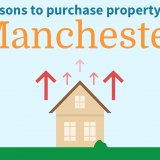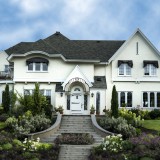With property ownership being unfeasible for many people and rent prices soaring higher and higher, many people are seeking alternative ways to get a roof over their head. Some of the ideas are bizarre on first reading about them, but each makes brilliant sense and turn out fantastically, saving their owners thousands and thousands of pounds.
Canal Boats
Calling themselves water gypsies, the people who take on in this now very popular living trend know that their life isn’t for everyone. In an interview with the Guardian Emil Morus-Jones, who lives on the canals near Camden Locks, said “You have to be very aware of the batteries, power, how much water you have got and where the nearest water point is. Certainly emptying the toilet every week is not everyone’s idea of bliss,”.
But it is an incredibly cheaper way to live, considering that a “shoe box” flat in central London will cost you over £400,000. A 55ft Canal Boat may set you back around £20,000 and cost around £2,000 a year to run, license and maintain.
CC - Nathan Nelson
via Flickr
Expensive living costs are not the only reason for buying into this trend. People also move into the boats for the community, it is a place where strangers say hello and get to know each other, not your usual London living!
Though the influx of new boats has led to some issues as there are now sometimes 3,000 boats chasing 2,000 moorings, meaning there is a shortage of places.
3D Printed Houses
A company in China has managed to make 10 3D printed houses in one day, with the cost to build being under $5,000 (£3,183). The Chief Executive of the building company, Ma Yihe, says “We can print buildings to any digital design our customers bring us. It’s fast and cheap,”
Right now, Chinese building regulations only allow for one story houses, but the company is dreaming big and hopes that one day we will see 3d printed sky scrapers. The houses don’t look very attractive but it is quite an achievement.
A Dutch architectural company are currently 3D printing an eco-friendly canal house, made from plant oil, theirs will not be finished in a day, instead they are printing parts and then building the house, which certainly looks more attractive. They believe that 3D printed houses will be the most sustainable way of building the houses of the future
Public Toilets
Laura Clark, an architect living in London has turned a set of underground public toilets into a visionary dream. People at first questioned her sanity, but after seeing her finished product, they can only applaud her brilliance. Initially, Clark wanted to turn the toilets into a bar or bespoke cinema, but when the economy dive bombed in 2008, she decided that a one bedroom flat would be more economical.
The finished space is bigger than many London flats, it is designed beautifully and it has its own subterranean garden, more than many people could hope to have. Clark managed to finish the re-build for £65,000.
Image credit: crystalpalacetoilets.blogspot.co.uk/
Micro-Houses
If you like to hoard items, then this life isn’t really for you. Micro-Houses are an incredible trend of making space saving buildings. Take a look at DMVA’s blob house. It looks like an incredibly modern and beautiful caravan, that has had its wheels removed and has been reshaped into a blob. Inside there is room for a lot of items, there is a shower hidden behind the many shelves and one shelf can even be used as somewhere to sleep.
Photo by mick couwenbergh/rini van beek
There are more ordinary micro-houses too, though they all employ truly stunning ideas to save space and feel large enough for you to live.
Many of the micro-houses we’ve seen are found in the countryside, so although the living space is small, the area they occupy is usually massive, with fields and countryside surrounding them. Whether we will see them in urban/suburban living areas is another matter.
Tree Houses
Tree houses are genuinely being used as a way of living, and many holiday homes have taken on the idea too. Terreform One’s designs for their Willow Balls are turning heads, and though not liveable all year round, they do make for interesting ideas for future properties.
Terreform One’s design sees a house that is actually made from living trees. They use fast growing ficus trees around a spherical scaffolding frame, and once the trees have grown they can remove the scaffolding and you have your very own liveable tree for about £5,000.
The idea is almost 180 degree turn from how people usually build, instead of destroying plant life, they are creating it. Part of the charm of the Willow Balls is that they could reduce your carbon footprint.
Here at Property Moose we marvel at the amazing new housing trends that we see nowadays and we hope that one day we could find an alternative house on our crowdfunding investment site. If you are interested in property and exciting new ways to invest, please visit our site today: Propertymoose.co.uk






